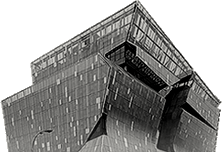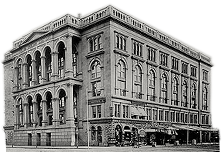Hayley Eber
Associate Professor Adjunct
Hayley Eber (b. Johannesburg, South Africa) is an architect, designer and educator. She is the Executive Director of the Van Alen Institute, as well as the Principal of Studio Eber, an award-winning New-York based practice for architecture and design. Studio Eber (previously EFGH) was founded in 2008 and actively engages projects that seek to expand the boundaries of architecture, through the design of buildings, interiors, objects, environments and installations. Prior to joining Van Alen Institute, she served as Acting Dean (2022–25) and Associate Dean (2019–22) of The Irwin S. Chanin School of Architecture of The Cooper Union.
She previously worked at Diller Scofidio and Renfro in New York, where her experience ranged from temporary installation and media work, performance, architectural competitions and large scale urban projects, most notably the High Line. Prior to joining DS+R, she worked at Eisenman Architects in NY on The Arizona Cardinals Stadium and the Holocaust Memorial in Berlin and at Wiel Arets Architects in Maastricht on the Utrecht University Library.
She holds a Masters in Architecture from Princeton University School of Architecture, a Bachelors of Architecture from the Cooper Union, and a BAS from the University of Cape Town. She is a licensed architect in the state of New York. She previously taught at Princeton University (2013-19) and Columbia University GSAPP.




